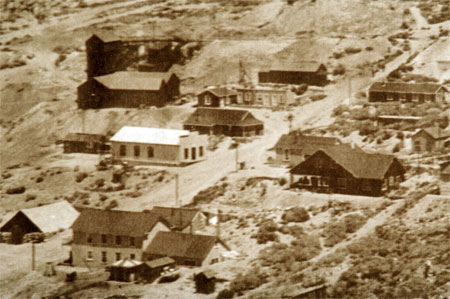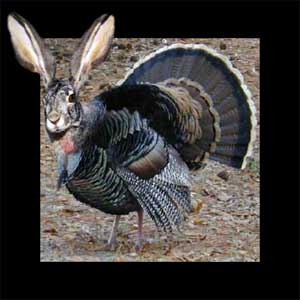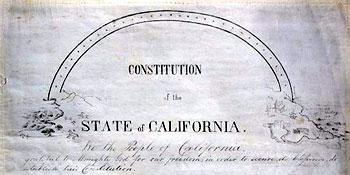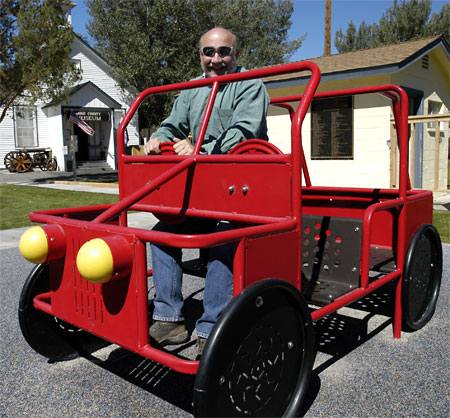
|
READ
ABOUT US! |
|

Bill
Becher, L.A. Daily News outdoor writer and photographer
went to Bodie with us. Read what he wrote about the trip. Click
the photo to link to the story. |
|
|
|
PHOTO
GALLERY

By
God, to Bodie and Golden Leaves trips,
Sept. 2004. Click the
photo to go to the gallery
|
|
Click on
the photo below to read more about Cerro Gordo.

|
|
|
|
 |
|
|
|
Don't have a 4X and want to
visit historic sites in Eastern California?
Capture the spirit of the past as it comes alive with true tales of pioneer families, prospectors, muleskinners, hero's and gunslingers. Listen to legends of lost gold, found wealth and superstitions.
Journey back in time with Terri Geissinger - Historian, Interpreter and Guide

Click on Terri's yellow van for Terri's
Ghost Town Tours or
contact Terri by clicking here:

|
|
|
Please
Pass the Jackrabbit
by
Cecile Page Vargo
|
|
The
first citizens of the newly created state of
California
were probably too busy to celebrate holidays, particularly those working
hard in the mining camps hoping to become wealthy. Governor Peter
Burnett didn't let that stop him from declaring one, however. Amongst
his many great duties, he set aside November 30 of 1850 as the legal
holiday for Thanksgiving. All official business was stopped, and at
least those from
New England
, who had memories of their loved ones and days of thanks in the past,
felt obliged to observe, if the news got around to them in time for them
to do so.
Immigrants
from the southern and middle
United States, and from
Europe
thought the holiday purely Puritanical and didn't cotton much to the
idea. In their minds the whole thing was ridiculous and many considered
it hypocrisy. Still, the New Englanders showed determination to follow
Governor Burnett's proclamation and many others decided to join in when
they realized the holiday mainly meant eating and drinking all they
wanted to.
"Yankee"
Traditions
Reportedly,
there were about 50 Thanksgiving celebrations that first year. The
old-timers talked of "Yankees" throwing down their picks and
shovels and having a good old time. The traditional turkey was rather
scarce, unless someone lived where they could find and kill a wild bird.
For the most part even a little fresh beef was satisfactory for a day of
thanks. If one was lucky enough to kill a deer and serve it, that was
considered a fine luxury. In most miner's cabins, however, jackrabbit
took the place of honor as the main entrée. Some, like Alfred T.
Jackson of Litchfield county,
Connecticut
, enjoyed quail stew and dried apple pie. Although Alfred, apparently
missed Governor Burnett's official holiday date announcement, and
celebrated his holiday December 1st.
The
Governor's Feast
Of
all the celebrations that first year,
Sacramento
probably had the grandest. As soon as they heard Governor Burnet's
announcement, the town population of men from
New England
banded together to form The Sons of New England. They put
together plans for a banquet to be held in the dining room of the
Columbia Hotel. The walls were adorned with bunting. Flags and shields
containing the names of each of the states formed a frieze. Everyone was
invited to the feast, even if they weren't New Englanders. Governor
Burnett, himself, even showed up, just in from a funeral from
Monterey
. Mr. K. M. Berry was presided over the event, Rev. Benton blessed the
food, and Mr. W. Cartwright made the toast. Forty different dishes,
including the traditional turkey and pumpkin pie, and eight different
wines, were served. Many dishes were as elegant as any served in the
best restaurants around the world. The feast and festivities went on
until
midnight
.
Read
More
|
|
The
Making of a Golden State
by
Cecile Page Vargo
|
|
The cry, "gold!" was shouted from Sutter's Fort in
January of 1848 and the rush to
California
was on soon after. Within three years the non-Indian population
swelled from 18,000 to 165,000. Immigrants from the eastern
United States
,
Mexico
,
South America
,
Europe
,
Asia
,
Hawaii
,
Australia
, and more, journeyed by land and by sea, enduring great hardships
along the way just "to see
the elephant". Some turned back after seeing the elephant's
tracks or tail, and claimed that just the view was enough for them.
Others struggled with a new way of life and helped to build the
California
that we know today.
Dreams of Statehood
With the on rush of argonauts, it became inevitable that the
golden land that had been seized by Americans during the Bear Flag
Revolt of 1846 would begin dreaming of statehood. The first
U.S.
military governors happily left the acaldes in rule, but the new
American Californians soon decided the Mexican system was not
sufficient for them. On
June 3, 1849
, military governor, Brigadier General Bennet Riley, called for a
state constitutional convention. Forty-eight
delegates were chosen to convene at Colton Hall in
Monterey
on September 1, just for that purpose.
Amongst the 48 delegates to this constitutional convention,
37 were Americans, seven were Californios of Mexican descent,
and four were foreigners. All were males, primarily between the ages
of 30-50. Dr. Robert Semple, the founder of the city of
Benicia
and of Bear Flag Revolt fame, was elected to preside over the
convention. Other notables were: John Sutter, the owner of the sawmill
where the gold rush began; native Californian and former Northern
California Mexican military commander, General Mariano Guadalupe
Vallejo; rich land speculator and former Mississippi congressman, Dr.
William Gwin; Don Abel Stearns of Southern California, and Henry W.
Halleck, Secretary of State under the military regime and future
commander of Union armies during the Civil War.
Issues of Importance
Some of the issues the delegates discussed during the
convention were: slavery, suffrage, state boundaries, women's
properties rights, dueling, and where the state capital would be. It
was unanimously decided that slavery would be prohibited, and free
African Americans would be allowed in the state. The decision was
easily met, primarily because miners in the gold fields firmly
believed that every man should dig for his own future, and did not
want to compete with slaves. So far as suffrage, only white males
would be allowed to vote, although Indians or their descendants could
be granted the right by special legislature act. Women could not vote,
but they were allowed to hold their own separate property,
provided that they were married, of course. Dueling was voted against,
and all persons charged with criminal offenses, be it dueling or any
other, were to be tried by a jury of their peers. After argument over
whether the state boundary should be the great
Rocky Mountains
, or somewhere near
Utah
's
Salt
Lake
, the more natural boundaries of the
Sierra Nevada
Mountains
and the
Colorado River
were favored. Although the state capitol would be moved a few
times in the future, the pueblo of
San Jose
was chosen at this particular time.
Read
More
|
|
Our Tours with
Ecological 4-Wheeling Adventures |
|

Our 2004 tour schedule is
complete and
we're doing some less
strenuous driving!
Please check back for our 2005 tour schedule.
|
|
Explore Historic California! |
|
Not too many years ago, the family station wagon was the
magic carpet to adventure. Today, that family station wagon is likely to
be a four wheel drive sport utility vehicle or pick up truck. SUV's and
other 4x4's are one of the best selling classes of vehicles. Ironically,
industry statistics show that once purchased, few owners will dare to
drive their vehicles off the paved highway. Click your mouse through our
website and enjoy our armchair adventures and the histories behind them.
If you are interested in taking one of our guided tours with your
vehicle, please visit our ECOLOGICAL 4-WHEELING ADVENTURES.
Several years ago, we bought our first SUV. We went to a one-night class
at a local community college entitled "How to 4-Wheel Drive" by Harry Lewellyn.
The following weekend we attended the hands-on day tour. We liked what we were
doing so much that we began going out nearly every weekend and learned how to
negotiate a variety of dirt roads. Our spare time was spent doing research on
the history and ecology of our favorite areas. A one-day outing turned into 16
years of leading others on mini-vacations throughout Southern California and the
Owens Valley.
Our 4WD outings involve driving on easy to moderate dirt roads and are
ideally suited to novice and intermediate level drivers. All tours are suitable
for stock vehicles in good condition, although some tours do have vehicle size
restrictions.
Our tours are
operated under permits issued by the Bureau of Land Management, U.S.
Forest Service, and other authorities.
We share our knowledge of the backcountry over the CB radio with our
guests. We frequently stop to explore mining areas, old and new, and ponder the
rocks, plants and animals we may encounter. We'll occasionally visit an old
cabin or deserted mountain lookout.
California has a fascinating history, from geologic unrest and
prehistoric petroglyph scribes to the "Radium Queen of the Mojave" and the
"Human Mole of Black Mountain." Load up your 4X, fasten your seatbelts and get
ready to explore historic California.
Roger, Cecile and Marty |
|
|

